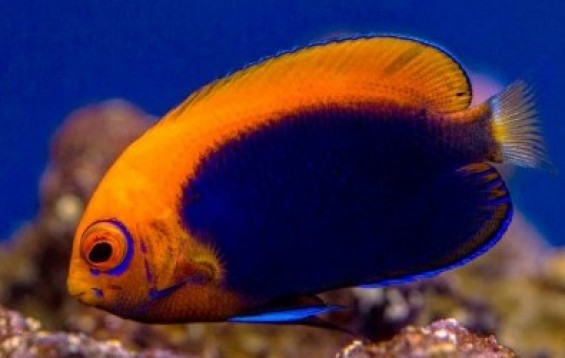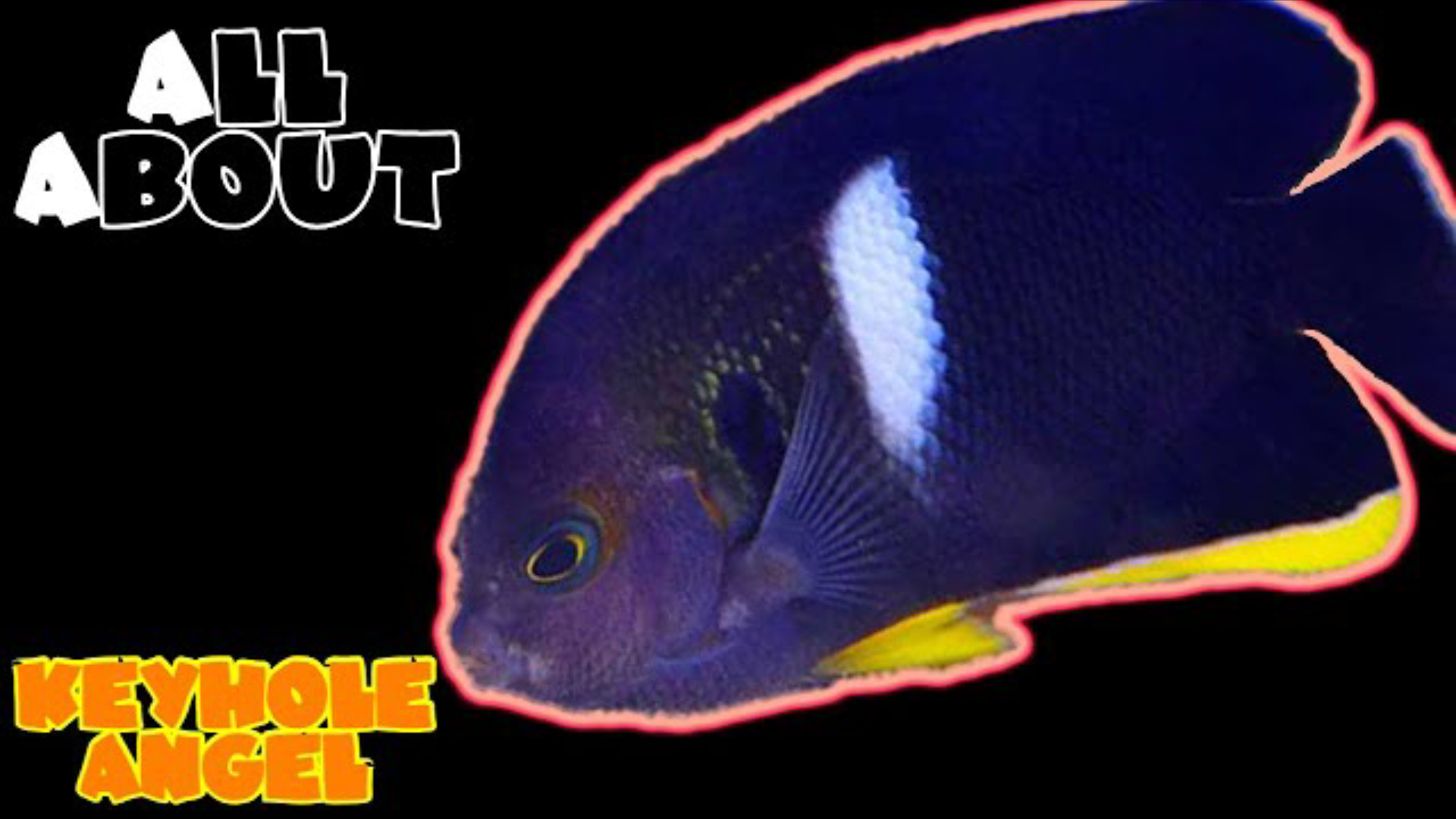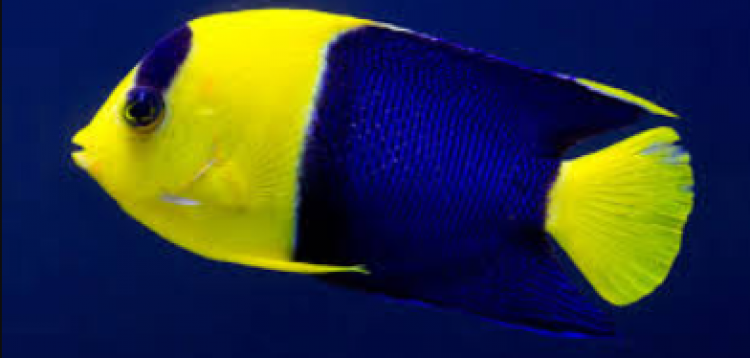- Name:
Flameback Angelfish
(View AKA's) - Family: Pomacanthidae
- Species: Angel Dwarf
- Scientific Name: Centropyge acanthops


General info about Flameback Angelfish
The Flameback Angelfish has striking contrasts of blue and orange-yellow colors. While the body is predominately blue, there is a broad and bright orange to yellow swatch from the head along the back to the tip of the dorsal fin. The caudal fin is yellow and somewhat transparent, which distinguishes it from the Brazilian Flameback Angelfish. On occasion, this fish may nip at SPS and some species of polyp corals in the reef aquarium.
Flameback Angelfish Diet & Nutrition
Flameback angelfish are omnivores feeding mainly on invertebrates and algae. Diet in captivity may include frozen mysis shrimp and Spirulina algae. Angelfish food preparations, pellets, and other frozed food products may be fed to these angels.
Determining Sex of Flameback Angelfish
Flameback angelfish like other angelfish belonging to the genus Centropyge are protogynous hermaphrodites. This means that a group of flameback angelfish are all born female but may undergo sex change when the need arises, hence the determining factor for an individuals gender is their size. Male Flameback Angelfish are relatively larger than their female counterparts.
Breeding & Spawning Flameback Angelfish
Flameback angelfish are observed to spawn at dusk just before sunset in the wild. The male flameback angelfish will soar and hover over a female Flameback, extends his fins, and tilts at a 45-90 degree angle. The female then follows the male at the top of the aquarium. male will stimulate the emission of eggs with biting motions on female's abdomen; eggs will be released for external fertilization and abandoned in open water without any particular parental care.
Captive breeding of this species haCoral Beauty Angelfishes are susceptible to the common reef scourges such as parasites like White Spot Disease (Cryptocaryon irritans) or also known as Crypt, and Velvet Disease (Oodinium occelatum) which is a parasitic skin flagellate.ve been proven difficult.
Common Diseases with Flameback Angelfish
Coral Beauty Angelfishes are susceptible to the common reef scourges such as parasites like White Spot Disease (Cryptocaryon irritans) or also known as Crypt, and Velvet Disease (Oodinium occelatum) which is a parasitic skin flagellate. White spots and dusty golden film lesions on the skin or the eyes of the angelfish are observable when the fish contracts such diseases.
It is also vulnerable to bacterial and fungal diseases as a secondary infection from the parasitic and protozoan diseases. One major bacteria of concern is the Vibrio bacteria. It usually starts as an infection that turns into Dropsy, Popeye, Bleeding or Red Streaks on the skin. It is a very fast acting bacteria that can kill the fish within two days.
Flameback Angelfish Origin
Centropyge acanthops originated in the coasts East of Africa. Its range covers the western Indian Ocean particularly from Oman and Somalia south to East London, and east to Madagascar, Seychelles, Comoros, Mauritius, Reunion and the Mascarene Islands, and in Maldives.
Caution with Flameback Angelfish
Flameback angelfish tends to be territorial against non-sessile invertebrates (shrimp and crabs) and other algae grazing fish of the same size and color, such as Tangs, Rabbitfish, and other Angelfish. They are well suited in reef-tanks, however, caution should be exercised in adding them to tanks with meaty brain corals such as Cynarina spp. and Trachyphyllia spp.
Caution should be done in adding this species into the tank, consider introducing them to the tank and a bigger tank is recommended to avoid the need to becoming aggressive to other tankmates.
Acclimating Flameback Angelfish
Flameback angelfish fare well in Fish-Only-Live-Rock tanks but they also do well in reef tanks. They should be provided with enough rocks and crevices to provide hiding space since when first introduced to the tank this pygmy angelfish tends to be shy. After a few days of acclimation, these Flameback angelfish becomes more active and will spend most time grazing on the rock and sand in the tank.
Original Detail
| Name | Species | Family | Scientific Name | More Detail | Added by |
|---|---|---|---|---|---|
| Flameback Angelfish | Angel Dwarf | Pomacanthidae | Centropyge acanthops | The Flameback Angelfish has striking contrasts of blue and orange-yellow colors. While the body is predominately blue, there is a broad and bright orange to yellow swatch from the head along the back to the tip of the dorsal fin. The caudal fin is yellow and somewhat transparent, which distinguishes it from the Brazilian Flameback Angelfish. On occasion, this fish may nip at SPS and some species of polyp corals in the reef aquarium. |
Admin |
Changed by users
| Submitted Date | Submitted By | Status | Action |
|---|



